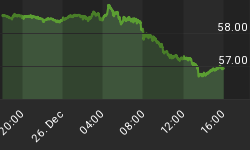The following is a brief outline of "Gold and the 'Flations," published in the April 2005 Gloom, Boom & Doom Report.
General talk has it that gold is a hedge against inflation. We might take this a step further and conclude that a unit of gold will purchase a constant basket of goods when prices are inflating.
Standard advice does not include gold in one's asset mix during non-inflationary periods. The evidence presents a more complicated picture.
Taking the data alone, gold has been a better wealth gatherer, and preserver, during deflations than inflations. (The following discusses gold vis-à-vis goods prices, not asset prices.) That is beside the point today: Gold has consistently been of greatest value during times of disintegration.
Roy W. Jastram, professor of economics at the University of California, Berkeley, spent two decades collecting data and sifting through the evidence. He published his conclusions in The Golden Constant (1977). (There is a recent successor book that is not consistent with Jastram.)
Jastram's interest was the value of gold in relation to purchasing power. Given most, if not all, paper currencies' decline in this regard, the author's findings are worth studying.
First, over long periods of time, gold maintains its purchasing power. "The intriguing aspect to this conclusion is that it is not because gold eventually moves towards commodity prices but because commodity prices return to gold." The author called this "the retrieval effect." The implication today is the price of goods, which have increased in the low single-digits over the past decade according the government, will catch up to the 18%-or-so annual increase in the spot gold price over the same time. Gold and Silver Stocks made the case that the miners are primed for heady gains. The farcical characters ruining the world's paper currencies make an even better case that gold is headed to 36,000 (as prophesized by Glassman and Hassett. They identified the wrong market.)
Second, gold has held purchasing power to a greater degree in deflationary periods than during inflationary times. That distinction is not important today, since this is a time of disintegration. Thus, we come to the heart of the matter:
Third, "gold has served as a financial refuge in political, economic, and personal catastrophes." The current collapse of central banking, the practitioners of which are destroying the world's financial system in an attempt to salvage their reputations, fits all three. Jastram labeled this the "Attila Effect."
That is the case, pace Jastram, for owning gold and the miners today.
Following are some very brief comments on Jastram's methods and review of his figures, originally published at much greater length in "Gold and the 'Flations."
Jastram collected data from two countries to produce his "purchasing power of gold." These were England (1560-1976) and the United States (1800-1976). England is a country "for which data are available over unusually long spans of time" and "with constant political boundaries for many centuries." Jastram recognized the United States cannot "match all of the attributes cited earlier for the choice of England" but "it is fully justified by its great importance both as a national economy and as an economic influence on the rest of the world."
He approached this excursion into economic history as a statistician: "I do not presume to take on the role of an economic historian or a monetary economist as well." Nonetheless, patterns of monetary behavior under analogous historical events do repeat themselves.
In England, the purchasing power of gold declined during inflationary periods: 1623-1658: -34%, 1675-1695: -21%, 1702-1723: -22%, 1752-1776: -21%, 1793-1813: -27%, 1897-1920: -67%, 1933-1975: -25%.
Again, in England, the purchasing power of gold rose during deflationary periods: 1658-1669: +42%, 1813-1851: +70%, 1873-1896: +82%, 1920-1933: +251%
The numbers require interpretation. Gold has been a much better hedge against inflation than is shown. For instance, during the inflationary period of 1933-1976 in England, gold lost 25% of its purchasing power but prices rose 1,434%. (As to what might have kept pace with inflation, "crime" comes to mind, the tendency at Too-Big-to-Fail banks.)
Importantly - for the investor and shopper - Jastram concentrated on periods that lasted a generation or more. He was "not concerned with a transient swing of upward or downward price movements of short duration, but rather with fundamental changes in price levels of substantial duration." He emphasized that gold is an ineffective hedge against yearly commodity price increases.
Jastram's findings should be compared to the traditional investment adviser's rationale for owning or not owning gold. As outlined:
Gold is a poor hedge against major inflations.
Gold appreciates in operational wealth in major deflations
Gold is an ineffective hedge against yearly commodity price increase
Over long periods of time, gold maintains its purchasing power.
Gold has no equal during times of disintegration. The "Attila Effect" is coming soon to stores near you.
Frederick Sheehan writes a blog at www.aucontrarian.com

















